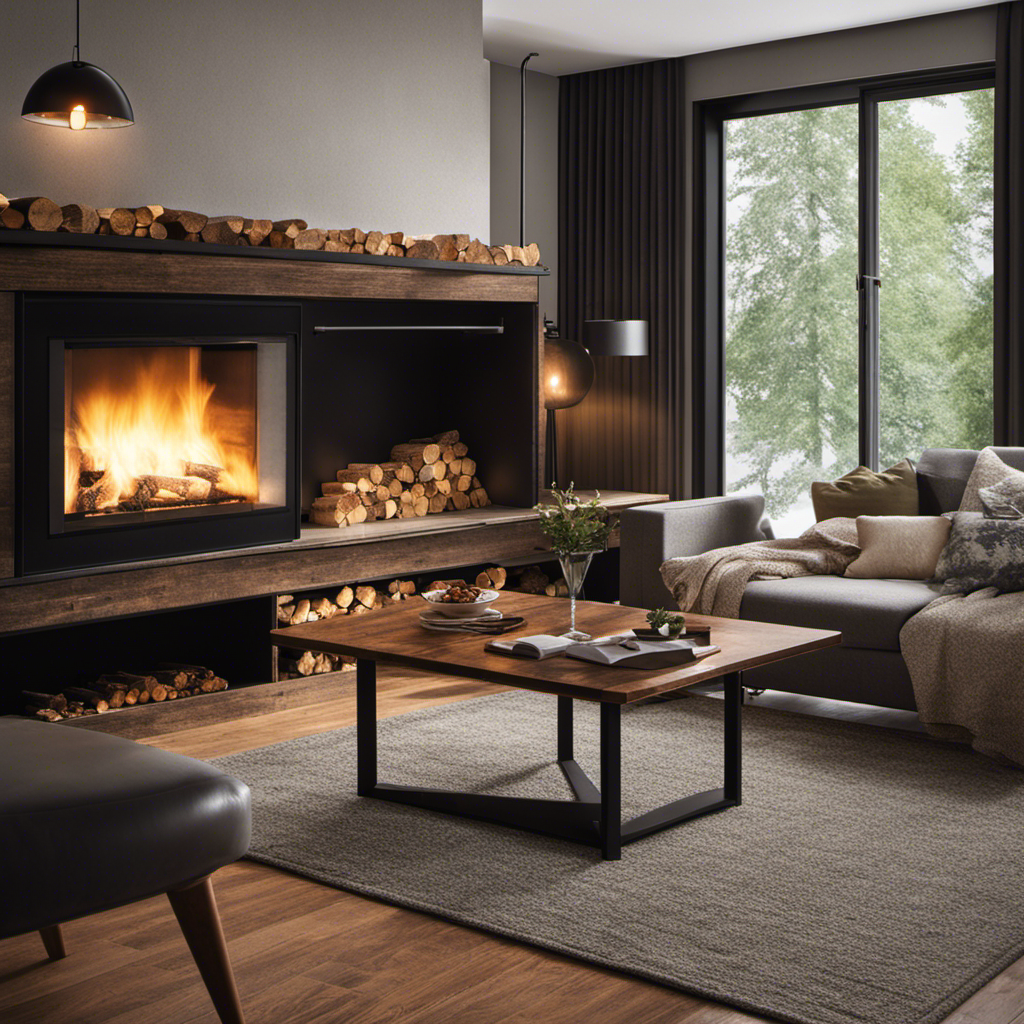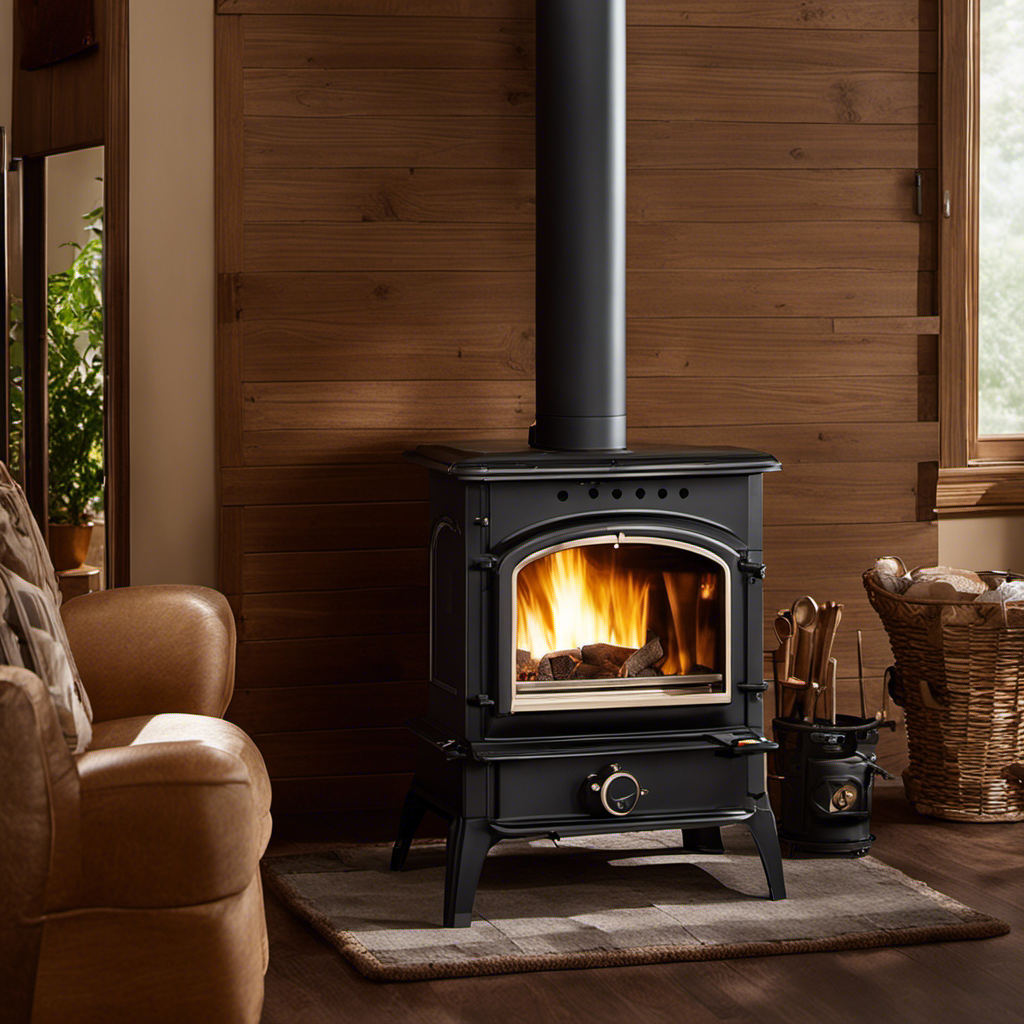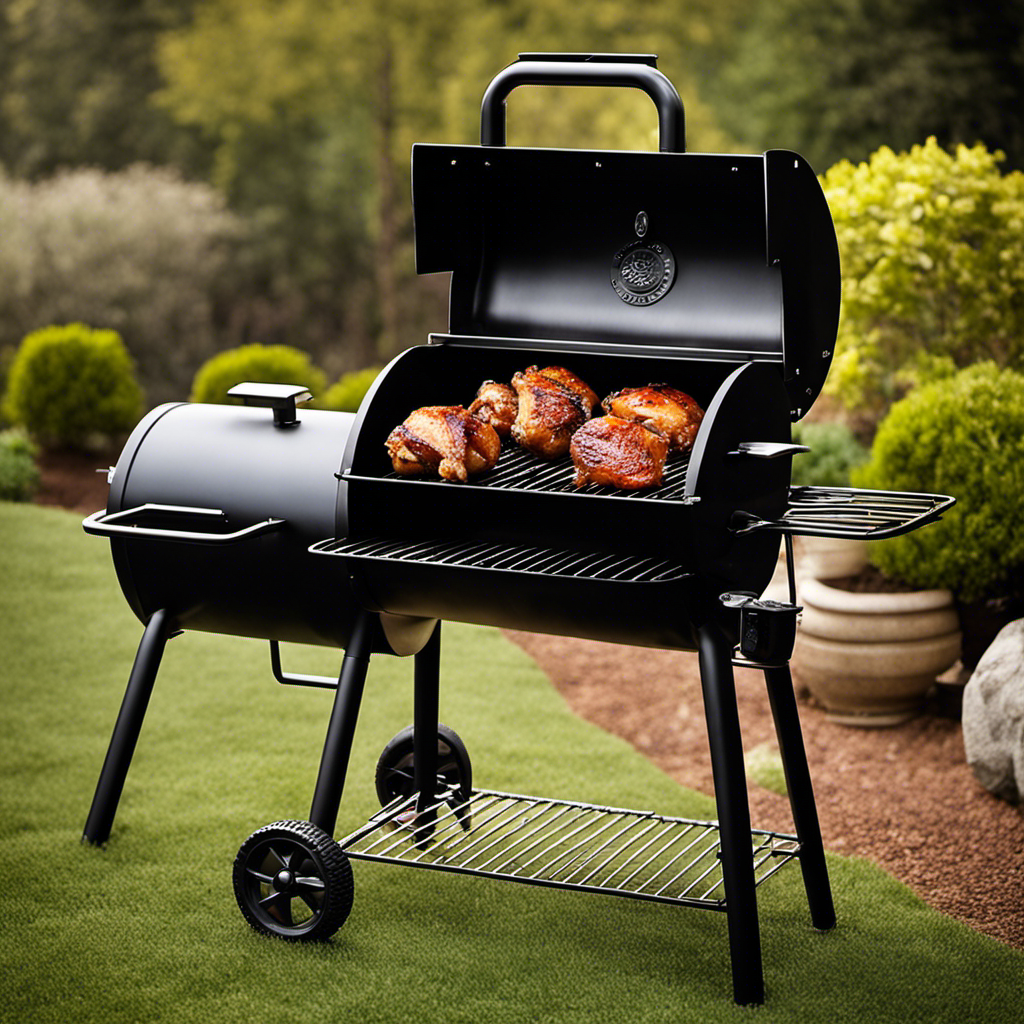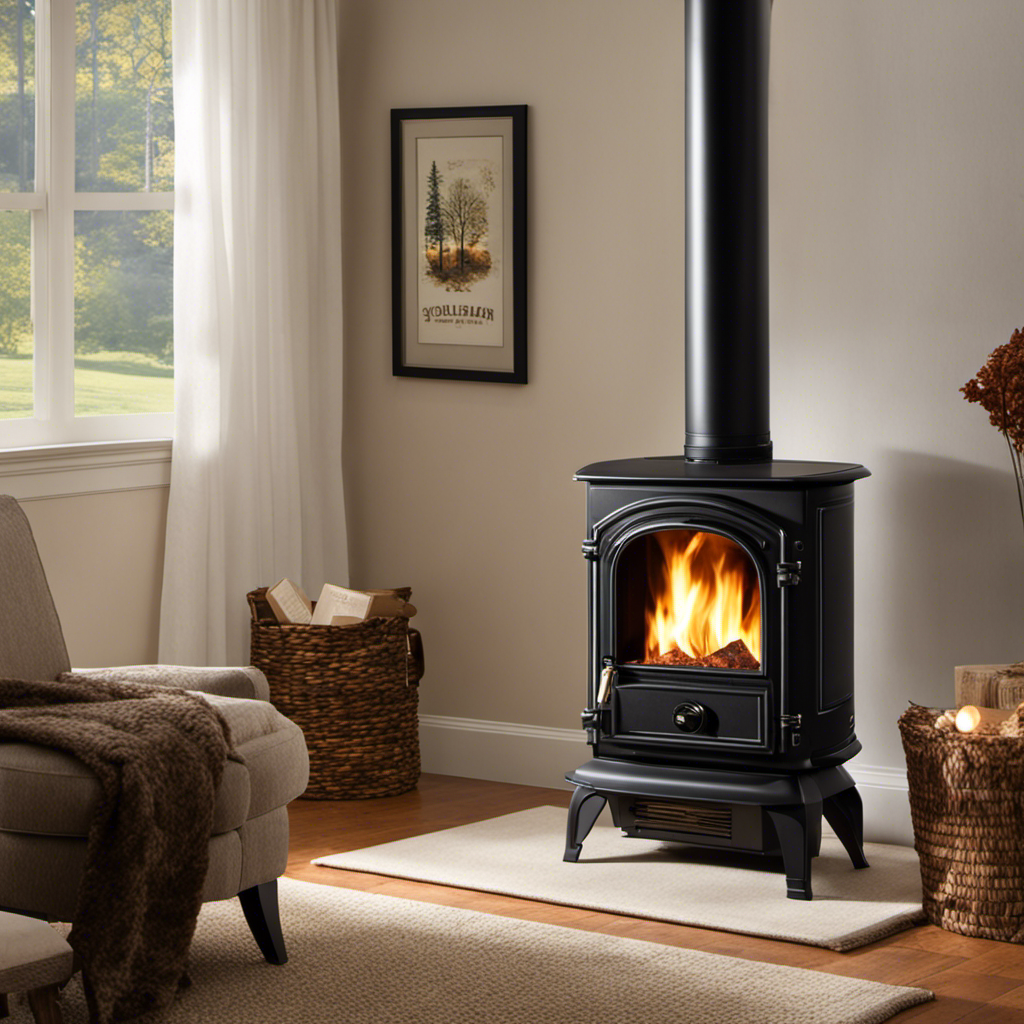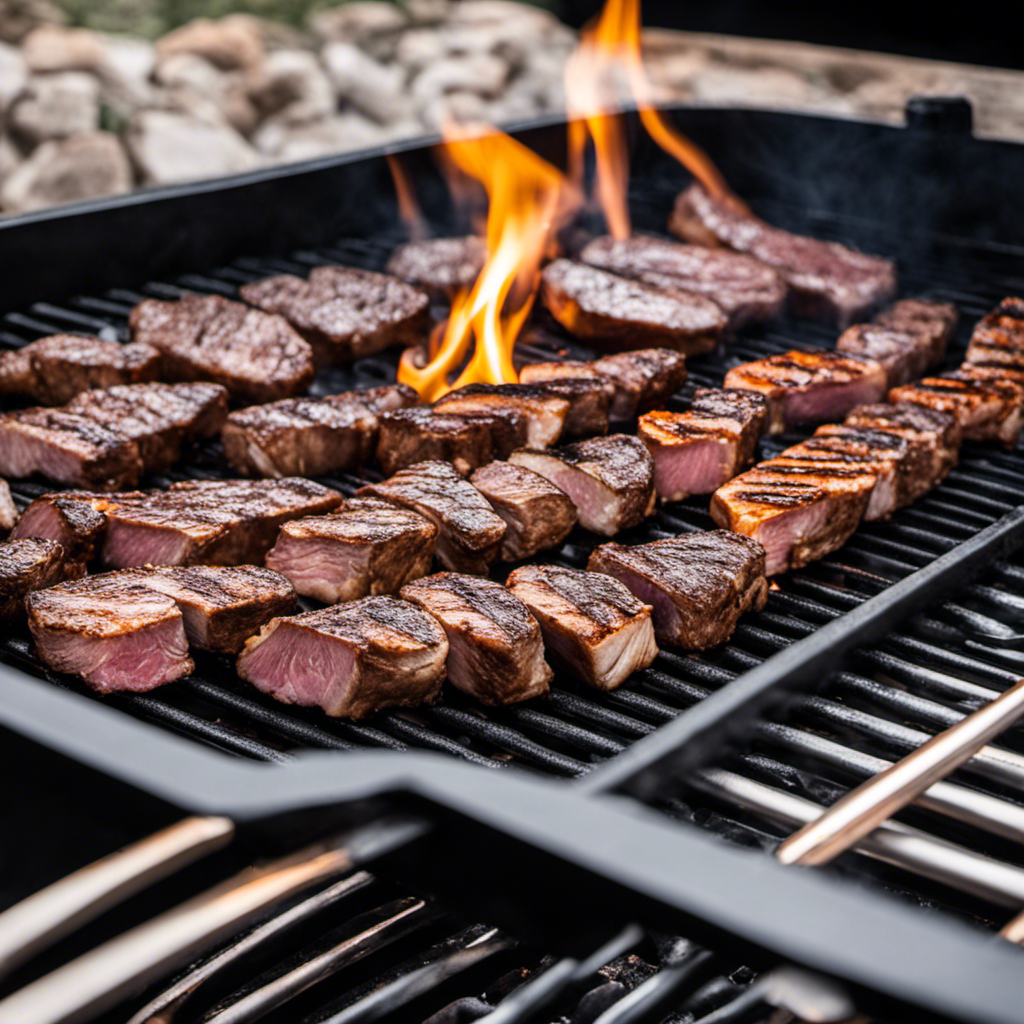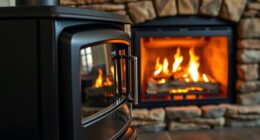Faced with the decision of whether to use wood or pellets for heating, you might feel as though you’re at a crossroads, uncertain about which direction to choose. Each option has its own benefits and drawbacks, and selecting the proper one requires thorough thought.
In this article, I will explore the various factors that can help us determine which option is better. From cost-effectiveness to environmental impact, heating efficiency to aesthetics, we will delve into the evidence and weigh the pros and cons, so you can make an informed choice.
Key Takeaways
- Wood is generally cheaper than pellets, offering long-term savings.
- Pellet fuel has a lower carbon footprint and emits less carbon monoxide and particulate matter compared to wood.
- Pellet stoves offer more efficient heat distribution and longer heating periods with less fuel consumption.
- Wood pellets are widely available, easy to store and transport, and require proper maintenance for optimal performance and safety.
Cost-effectiveness
Wood is generally cheaper than pellets, making it a more cost-effective option. When considering renewable energy sources, wood is a viable choice due to its affordability. The initial cost of purchasing and installing a wood-burning stove or fireplace is often lower than that of a pellet stove. Additionally, wood can be sourced locally and is readily available, further reducing expenses. In terms of long-term savings, wood proves advantageous as well. The cost of pellets can fluctuate, while wood prices tend to remain stable. Over time, these savings can add up significantly.
Transitioning to the next section, it is important to not only consider cost but also the environmental impact of using wood as a fuel source.
Environmental Impact
When assessing the environmental impact of different energy sources, two key points to consider are carbon emissions comparison and renewable resource availability.
Carbon emissions comparison allows us to understand the amount of greenhouse gases released into the atmosphere when using a particular energy source.
Renewable resource availability, on the other hand, pertains to the sustainability and abundance of the resource used to generate energy.
Carbon Emissions Comparison
If you want to reduce carbon emissions, you should consider using pellet fuel instead of wood. Pellet fuel is a more sustainable and eco-friendly option, as it has a lower carbon footprint compared to traditional firewood.
Pellets are made from compacted sawdust and other biomass materials, which are renewable resources. When burned, pellets release significantly fewer greenhouse gases and harmful pollutants into the atmosphere, resulting in improved air quality. In fact, according to a study by the U.S. Environmental Protection Agency, pellet stoves emit about 90% less carbon monoxide and 50-60% less particulate matter compared to wood stoves.
This makes pellet fuel a cleaner and greener choice for heating your home. Transitioning to pellet fuel can help us move towards a more sustainable future while reducing our impact on the environment.
Renewable Resource Availability
You can easily find an abundance of renewable resources to produce pellet fuel, such as sawdust and other biomass materials. These renewable energy sources are sustainable and provide an environmentally friendly alternative to traditional wood fuel.
Utilizing renewable resources for pellet production helps reduce the demand for non-renewable fossil fuels and contributes to a cleaner and greener future. Moreover, by using biomass materials like sawdust, we can effectively recycle waste and prevent it from being sent to landfills. This not only reduces waste but also helps in mitigating deforestation by reducing the need for harvesting new wood.
Pellet production from renewable resources promotes sustainability and minimizes the impact on our forests. Transitioning to pellet fuel made from renewable resources is a crucial step towards achieving a more sustainable and eco-friendly heating system.
Moving on to heating efficiency…
Heating Efficiency
To maximize your heating efficiency, consider using a pellet stove instead of wood. Pellet stoves offer a more efficient heat distribution compared to traditional wood stoves. The design of pellet stoves allows for a controlled and consistent burn, resulting in a higher percentage of heat being released into your living space. This means less heat loss and more warmth where you need it most.
Additionally, pellet stoves have a higher fuel consumption efficiency. The pellets used in these stoves are made from compressed sawdust and other biomass materials, which burn cleaner and more efficiently than wood. This means you can heat your home for longer periods with less fuel.
Now, let’s explore the availability and accessibility of wood and pellets as heating options.
Availability and Accessibility
When it comes to heating options, cost and convenience are two key factors to consider.
The cost of using wood or pellets as a fuel source can vary depending on factors such as availability and region.
Additionally, the convenience of storing and transporting the fuel can also play a role in determining the overall cost and ease of use.
Cost and Convenience
If you’re looking for a cost-effective and convenient option, pellets might be the better choice. Here’s why:
-
Energy Efficiency: Pellets have a higher energy density compared to wood, meaning they can produce more heat per unit. This makes them more efficient in terms of energy consumption and cost savings.
-
Fuel Availability: Wood pellets are widely available and can be purchased in bulk or bags from various suppliers. This means you don’t have to worry about finding a reliable source of fuel for your heating needs.
-
Convenient Storage: Pellets come in compact bags that are easy to store and transport. They take up less space compared to wood logs, making them a practical choice for homeowners with limited storage areas.
With their higher energy efficiency and easy availability, pellets offer a cost-effective and convenient solution for heating.
Now let’s move on to the next aspect: storage and transportation.
Storage and Transportation
You’ll find that storage and transportation are key considerations when it comes to using pellets for heating.
Wood pellet storage is relatively easy, as they can be stored in bags or in bulk in a hopper or storage bin. It’s important to keep the pellets dry to prevent degradation.
When it comes to transportation, pellet delivery can be arranged through local suppliers or purchased in bulk and delivered by truck. Pellet transportation cost can vary depending on distance and quantity ordered. Proper planning is essential to ensure a steady supply of pellets throughout the heating season.
Now, let’s move on to discuss the maintenance requirements of wood and pellet heating systems.
Maintenance Requirements
To properly maintain a wood stove, you’ll need to regularly clean out the ashes and have the chimney professionally inspected. This ensures optimal performance and safety.
Here are some key maintenance tasks and tips for wood stoves:
-
Clean out ashes: Remove ashes regularly to prevent buildup, which can restrict airflow and affect combustion efficiency.
-
Chimney inspection: Have a professional inspect the chimney annually to check for any blockages or damage that could cause smoke or carbon monoxide leaks.
-
Proper cleaning methods: Use a brush and dustpan to clean out ashes, and avoid using water as it can create a paste that is difficult to remove.
By following these maintenance practices, you can ensure that your wood stove operates efficiently and safely.
Now let’s explore the next aspect of wood stoves: heat output and control.
Heat Output and Control
Now let’s discuss how you can control and adjust the heat output of your wood stove.
When it comes to heat distribution and temperature regulation, wood stoves offer a great degree of control. By adjusting the air intake and damper, you can increase or decrease the amount of heat produced. This allows you to maintain a comfortable temperature in your home.
Additionally, wood stoves have the advantage of radiating heat even after the fire has died down. This means that they can continue to provide warmth even without actively burning wood.
As we move on to the next section about aesthetics and ambiance, it’s important to note that the heat output of a wood stove can also contribute to creating a cozy and inviting atmosphere in your living space.
Aesthetics and Ambiance
When it comes to creating a cozy and inviting atmosphere in your living space, the aesthetics and ambiance of a wood stove play a significant role. The design of a fireplace can greatly enhance the overall look and feel of a room, adding a touch of elegance and warmth.
The crackling sound of the wood burning and the flickering flames create a sense of tranquility and relaxation. The atmospheric warmth emitted by a wood stove creates a comforting environment on cold winter nights. Additionally, the natural beauty of the wood and the mesmerizing dance of the flames can be a focal point of any room.
Transitioning into the next section, it is important to consider health and safety considerations when using a wood stove.
Health and Safety Considerations
Make sure you properly maintain and clean your wood stove to prevent the buildup of creosote, a highly flammable substance that can lead to chimney fires.
In addition to the fire hazard, wood stoves can also affect indoor air quality. When wood is burned, it releases pollutants such as particulate matter, carbon monoxide, and volatile organic compounds (VOCs) into the air. These pollutants can have negative effects on respiratory health, especially for individuals with asthma or other respiratory conditions.
To minimize these risks, it’s important to use dry, seasoned wood and ensure proper ventilation when operating a wood stove. Regular cleaning and maintenance of the stove and chimney can also help reduce the release of pollutants and maintain good indoor air quality.
Frequently Asked Questions
What Is the Difference Between Wood and Pellet Stoves?
I’ll start by discussing the difference between wood and pellet stoves. Wood stoves have the advantage of providing a traditional and cozy atmosphere, while pellet stoves are known for their efficiency and ease of use.
Can Wood Pellets Be Used in a Regular Wood-Burning Stove?
Yes, wood pellets can be used in a regular wood-burning stove. However, there are benefits and drawbacks to consider. Wood pellets are cleaner and more efficient, but they may require modifications to the stove.
Are Wood Pellets More Expensive Than Firewood?
Wood pellets are generally more expensive than firewood. However, when considering the cost comparison, it’s important to also consider the environmental impact. Wood pellets have a lower carbon footprint and burn more efficiently.
How Often Do Wood Pellets Need to Be Refilled in a Pellet Stove?
In my experience, the refilling frequency of wood pellets in a pellet stove depends on various factors like the size of the hopper and the heating needs. Comparing efficiency between wood and pellets would provide more insight.
Can Wood or Pellet Stoves Be Used as a Primary Source of Heating for a Whole House?
As a homeowner, I’ve considered using wood or pellet stoves as my primary heating source. It’s important to weigh the pros and cons, such as efficiency and environmental impact, before making a decision.
Can Pellet Wood be Better Than Traditional Wood for Cooking Pork?
When it comes to cooking pork, the best wood pellet for pork can make a significant difference. Traditional wood may impart a strong flavor, while the right pellet wood can enhance the pork’s natural taste. Experiment with different types to find the perfect match for your favorite pork dishes.
Conclusion
In conclusion, after considering all the factors, it’s clear that the decision between wood and pellet as a heat source is a personal one. Both options have their pros and cons, making it a tough choice.
However, it’s important to remember that in the grand scheme of things, the most important factor is the satisfaction of sitting by a warm fire and feeling cozy.
So go ahead, choose whichever option brings you the most joy, and let the warmth of your decision melt away any doubts.
Stay warm, my friends!
Growing up surrounded by the vast beauty of nature, Sierra was always drawn to the call of the wild. While others sought the comfort of the familiar, she ventured out, embracing the unpredictable and finding stories in the heartbeat of nature.
At the epicenter of every remarkable venture lies a dynamic team—a fusion of diverse talents, visions, and passions. The essence of Best Small Wood Stoves is crafted and refined by such a trio: Sierra, Logan, and Terra. Their collective expertise has transformed the platform into a leading authority on small wood stoves, radiating warmth and knowledge in equal measure.

